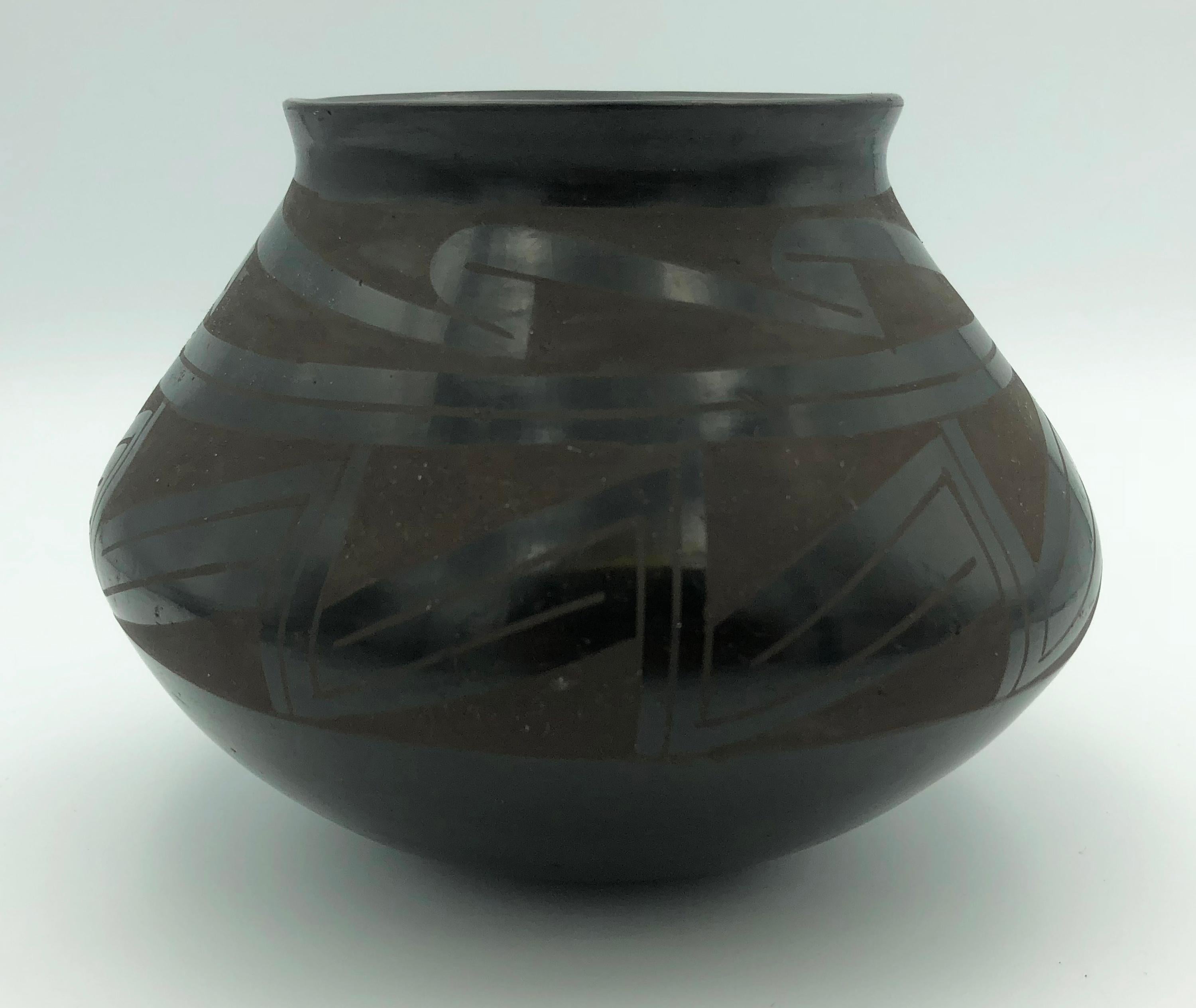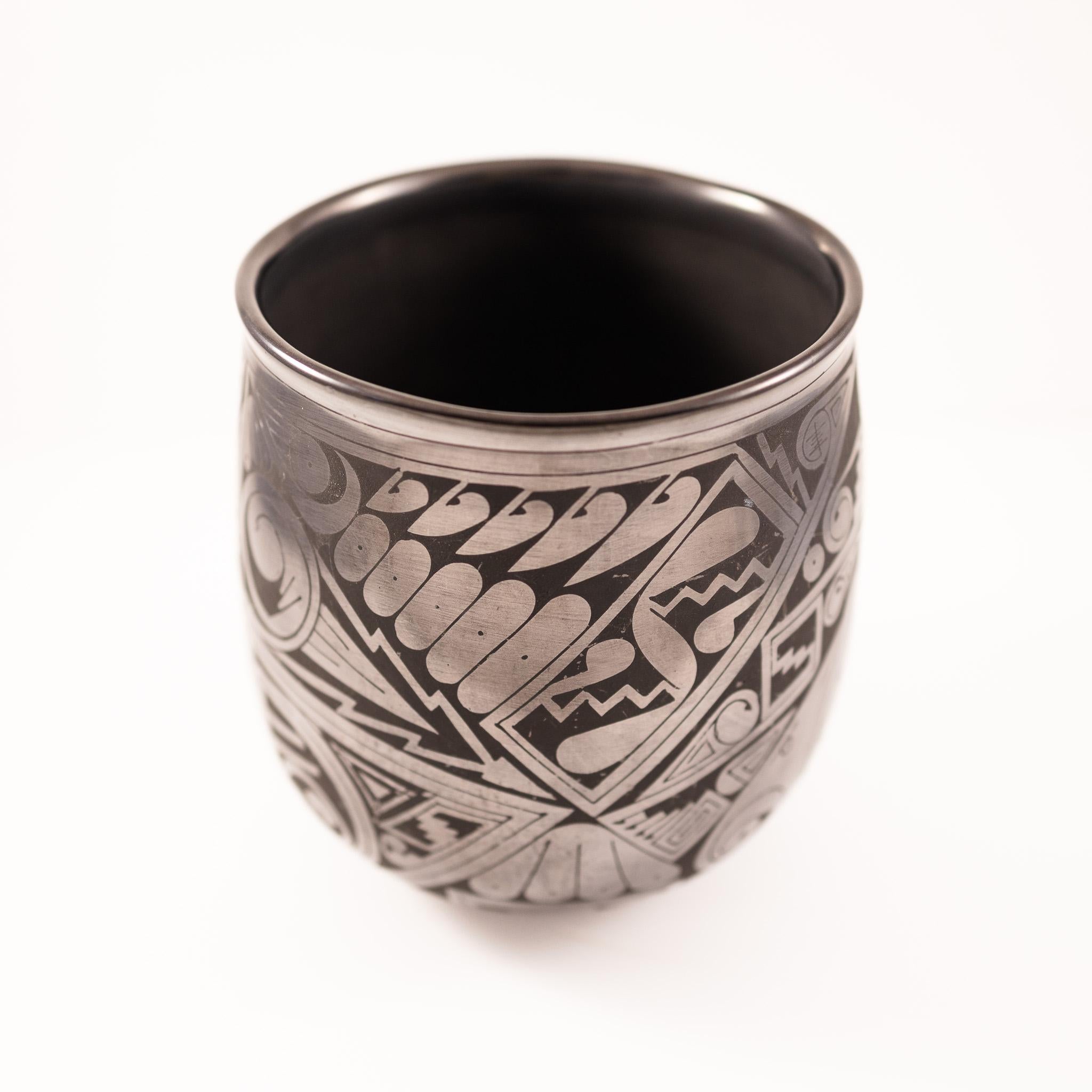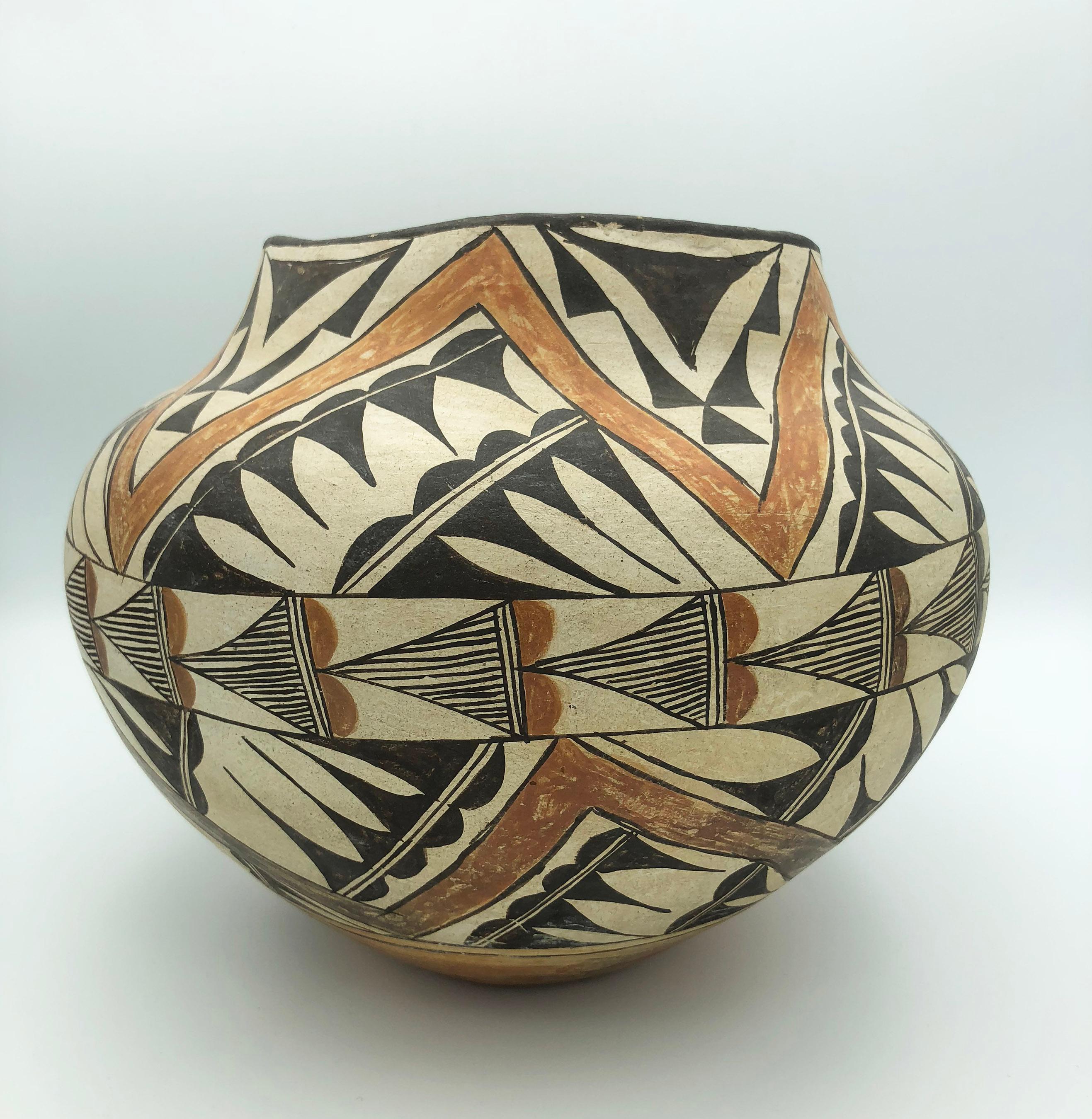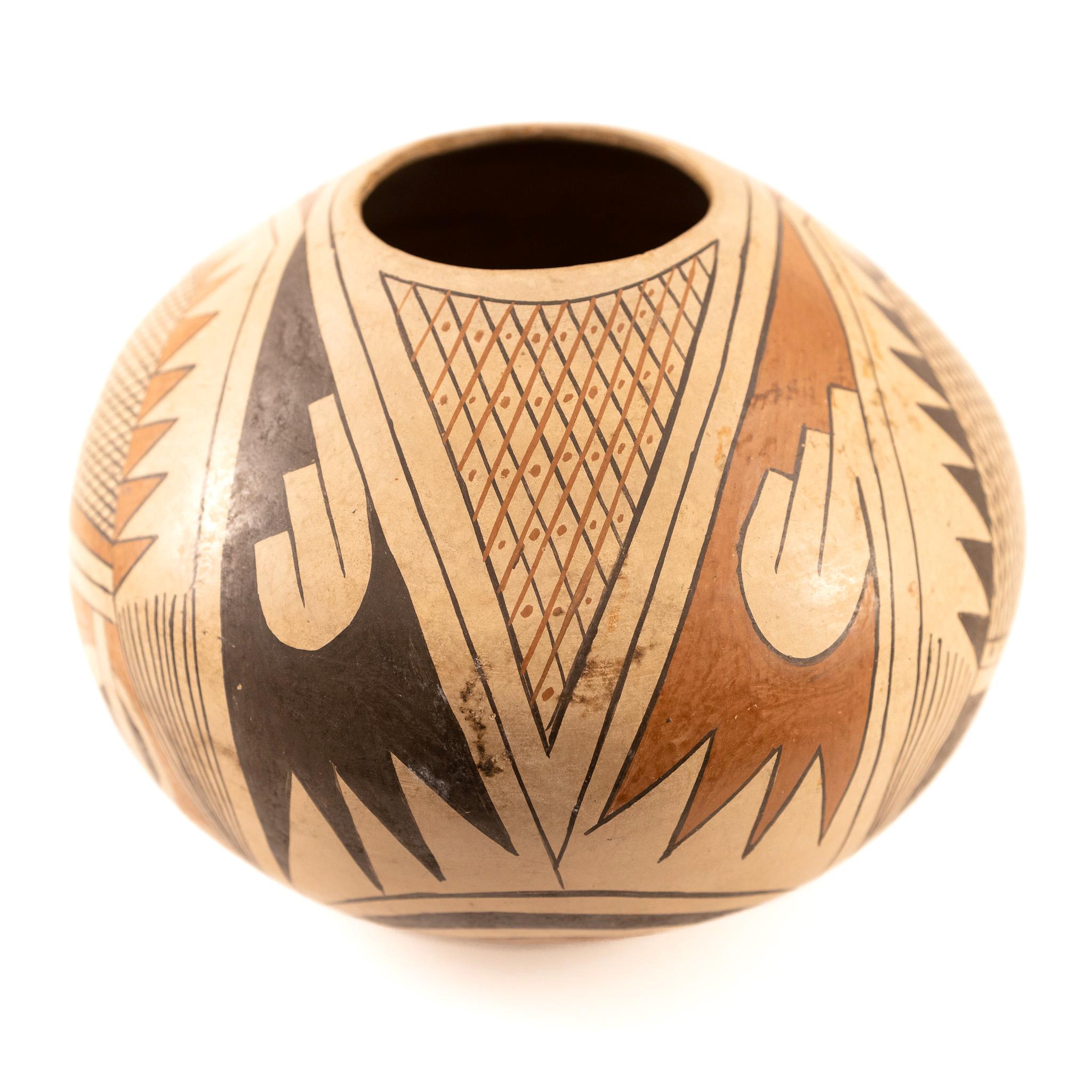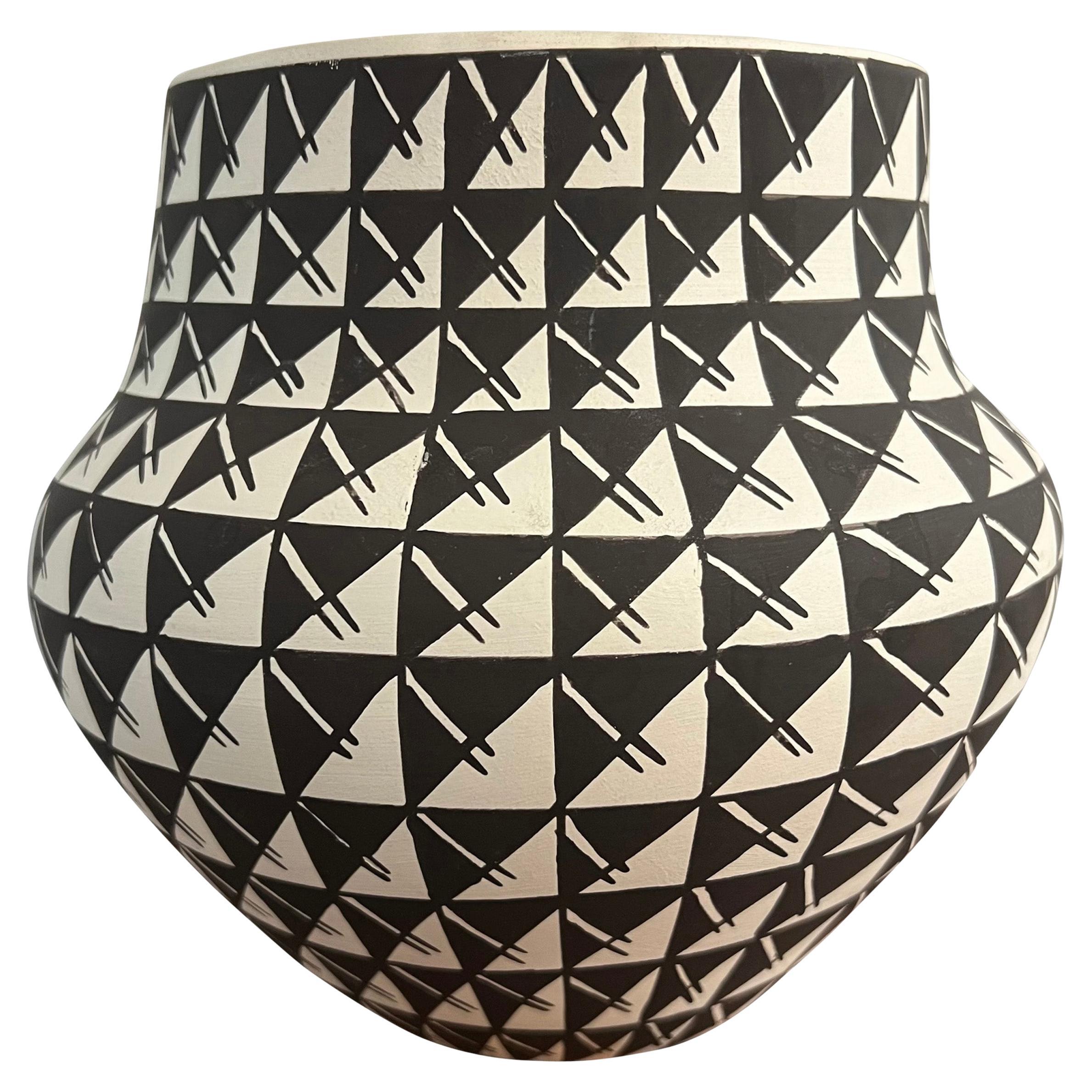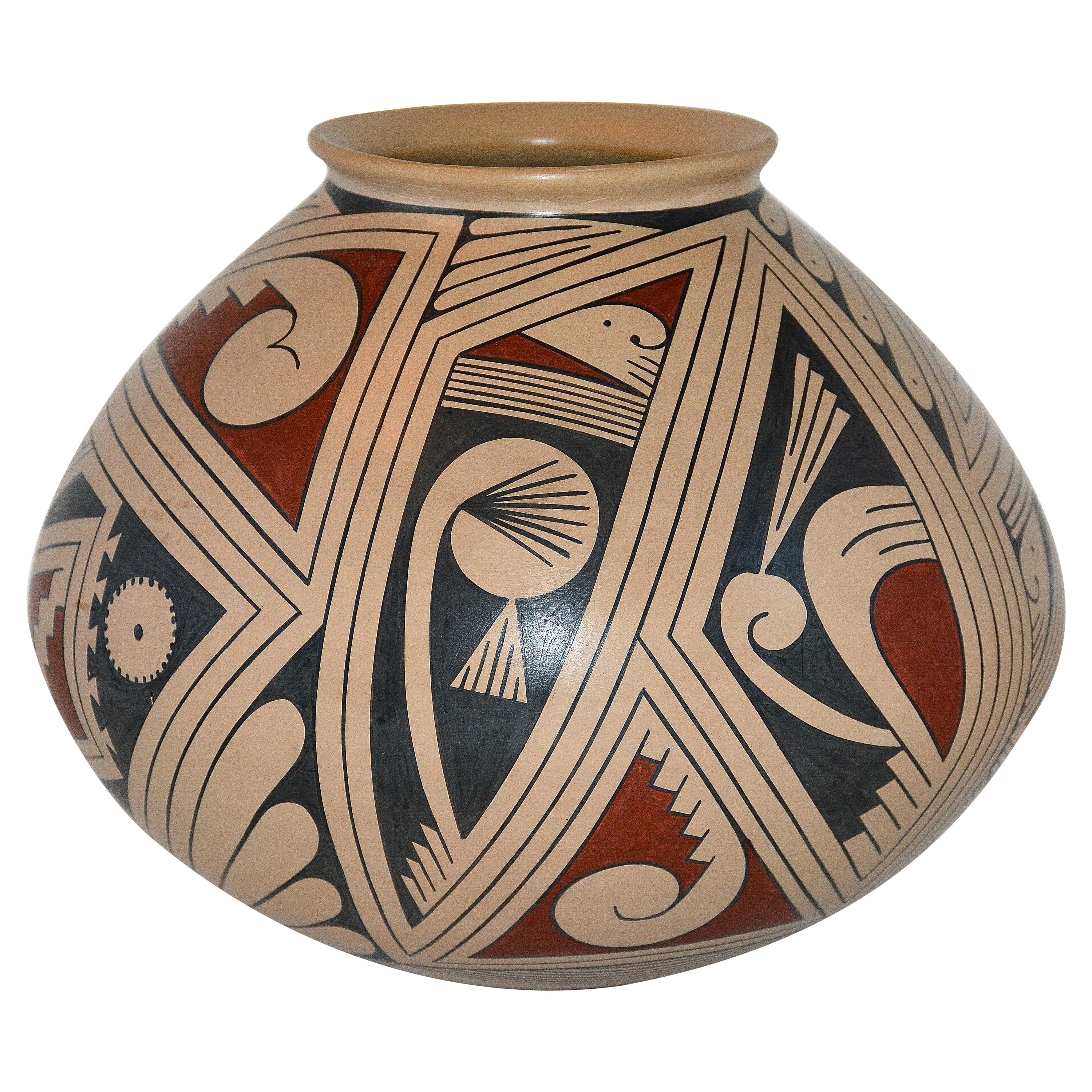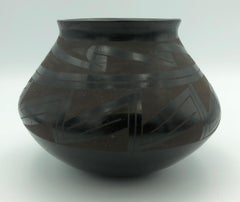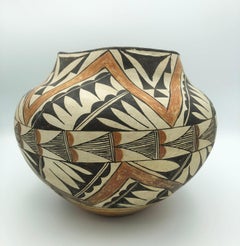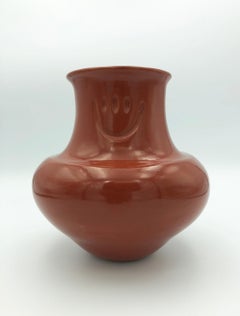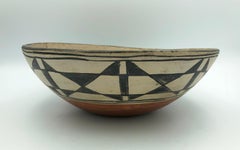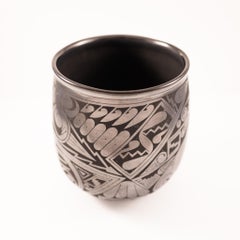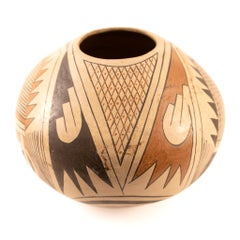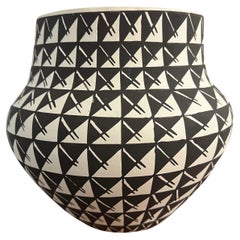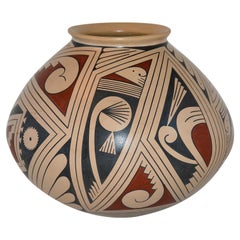Items Similar to Juan Tafoya San Ildefonso Native American Pottery
Video Loading
Want more images or videos?
Request additional images or videos from the seller
1 of 11
Juan TafoyaJuan Tafoya San Ildefonso Native American Pottery1983
1983
Price Upon Request
Price Upon Request
Price Upon Request
Price Upon Request
Price Upon Request
Price Upon Request
Price Upon Request
Price Upon Request
Price Upon Request
Price Upon Request
About the Item
Impeccable Provenance! See attached pictures of Juan Tafoya holding this particular piece, as well as his business card and his original letter all included.
Juan Tafoya (1949-2006) was a well-known San Ildefonso Pueblo potter who has been active since 1970. He passed away prematurely at age 57 years. Early on in his career, Juan began experimenting with firing techniques to achieve a brown/black combination, and experimented with using turquoise as a decorative element. He specialized in sgraffito designs where he would chip away at the polished slip to form a textured background.
According to a letter previously provided by Juan Tafoya, he was a life-long resident of San Ildefonso Pueblo and was involved in pottery making since he was first able to gather the materials that go into making pottery. He was taught the art of pottery making by his mother, Donicia Tafoya.
- Creator:Juan Tafoya (1949 - 2006)
- Creation Year:1983
- Dimensions:Height: 5.5 in (13.97 cm)Width: 7 in (17.78 cm)
- Medium:
- Movement & Style:
- Period:
- Condition:
- Gallery Location:Missouri, MO
- Reference Number:1stDibs: LU74733459693
About the Seller
5.0
Vetted Professional Seller
Every seller passes strict standards for authenticity and reliability
Established in 1970
1stDibs seller since 2017
156 sales on 1stDibs
Typical response time: Several days
- ShippingRetrieving quote...Shipping from: Missouri, MO
- Return Policy
More From This Seller
View AllMata Ortiz Black Pottery
By Griselda Camacho de Silveria
Located in Missouri, MO
Signed "Gris Camacho" on Bottom
This Mata Ortiz Black Pottery is a beautiful handmade jar created by Griselda & Juan Camacho. They are members of the Ca...
Category
Late 20th Century More Art
Materials
Clay
Price Upon Request
Acoma Pueblo Pottery
By Acoma
Located in Missouri, MO
Acoma Pueblo Pottery c. Late 19th C.
Earthenware Clay
9.5 x 11 inches
Acoma Pueblo is the oldest continually inhabited community in the United St...
Category
Late 19th Century More Art
Materials
Earthenware
Price Upon Request
Santa Clara Pueblo Pottery, Redware Pot
By Sharon Naranjo Garcia
Located in Missouri, MO
Sharon Naranjo Garcia (b. 1951)
Santa Clara Pottery
Red Earthenware Pot
approx. 8 x 8
Signed on the Bottom
Sharon Naranjo Garcia Santa Clara Peubl...
Category
Late 20th Century More Art
Materials
Clay
Price Upon Request
Historic San Ildefonso Pueblo Pottery
Located in Missouri, MO
San Ildefonso large pottery bowls are among the scarcest items made at the pueblo. One rarely sees them. Water jars or ollas are much more available.
Category
Late 19th Century Abstract Geometric More Art
Materials
Earthenware
Price Upon Request
Pot with Red & Black Motif
By Griselda Camacho de Silveria
Located in Missouri, MO
Griselda Comacho de Silveria
"Pot with Red & Black Motif
Earthenware
4.5 x 6.5 inches
Signed on Bottom
Category
Late 20th Century More Art
Materials
Earthenware
Courde (Gourd) Bowl
Located in Missouri, MO
Gabriel Argy-Rousseau (1885-1953)
Gourds Bowl c. 1922
Glass
Signed
3.75 x 4.5 inches
This G. Argy-Rousseau bowl has a very distinct arts and crafts feel...
Category
Early 20th Century Art Deco More Art
Materials
Glass
You May Also Like
Mata Ortiz Style Black Ware Pottery
Located in Austin, TX
This fascinating piece of black ware pottery by Macario Ortiz is in the 20th century Mata Ortiz tradition. It measures 7.5" x 6.25" in height and diameter, respectively.M
Category
20th Century Sculptures
Materials
Clay
Handmade Pottery Vase with Native American Design, Signed
Located in Austin, TX
By Emetero Ortiz R.
H x D: 7 x 9 inches
Singed on bottom
Ceramic decorative from the tradition of Mata Ortiz pottery
Handmade and polished by Casa Grandes Pueblo ceramicist Emeterio ...
Category
20th Century Sculptures
Materials
Ceramic
Late 20th Century Acoma Pueblo Pot
Located in Chicago, IL
This late 20th-century Acoma Pueblo pottery bowl is a striking example of the artistry and craftsmanship synonymous with Acoma pottery. Hand-painted with a meticulous black-and-white...
Category
Late 20th Century American Native American Ceramics
Materials
Ceramic
Mata Ortiz Pottery Vessel by Pilo Mora, 1990
By Pilo Mora
Located in Los Angeles, CA
Mata Ortiz Polychrome Pottery vessel
Pilo Mora, Master Potter (1961 - )
1990
Hand coiled low fire clay
Pueblo Quezada, Mata Ortiz, Chihuahua, Mexico
7 inches H. x 7.5 inches in Diameter
A classic example of this Master Potter's early work appearing in near excellent condition.
This Pilo Mora pot has remained in my private collection since 1990 and has never been offered on the market before.
Porfirio Mora Villalba, or Pilo Mora is one of the pioneers of Mata Ortiz Pottery...
Category
Late 20th Century Mexican Other Ceramics
Materials
Clay
Fine Vintage Laguna Pot Native American Pueblo
Located in London, GB
Fine Vintage Laguna Pot Native American Pueblo
Finely painted in linear geometric designs
Period 1970s signed on base R Reano
Condition Good
Category
20th Century American Native American Objects
Materials
Pottery
Decorative Pottery
Located in San Diego, CA
Decorative pottery, mimicking barnacles. Surface has a nice texture and color.
Category
20th Century Abstract Sculptures
Materials
Clay
